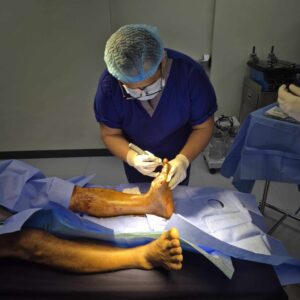Why More Patients Are Choosing Hip Replacement Abroad
The rising demand for hip replacement surgery has led many patients to explore alternatives beyond their home countries. In the United States and parts of Europe, the costs of orthopedic procedures have skyrocketed, creating financial barriers for individuals who need surgery urgently. Hip replacement medical tourism offers a pathway to access advanced treatments at a fraction of the cost without compromising on quality. Patients are increasingly looking overseas to find specialized clinics and hospitals that provide the same, if not higher, standards of care. Another major factor driving this trend is the long waiting times in some healthcare systems, leaving patients in pain and struggling with limited mobility. By traveling abroad, individuals can undergo surgery sooner and begin the recovery process more quickly. This global shift demonstrates how medical tourism has become a trusted solution for those seeking affordability, accessibility, and expert care.
Understanding Hip Replacement and Its Benefits
Hip replacement surgery is a life-changing procedure designed to restore mobility and alleviate chronic pain. It is often recommended for patients suffering from severe arthritis, hip fractures, or other degenerative joint conditions. The surgery involves removing the damaged portions of the hip joint and replacing them with durable artificial components. These modern implants are engineered to mimic natural movement, enabling patients to walk, exercise, and return to daily activities with far less discomfort. One of the greatest benefits of this surgery is the significant improvement in quality of life, with many patients regaining independence and enjoying activities they once avoided. Recovery timelines vary, but most individuals see dramatic relief from pain within weeks and continue to improve with physical therapy. With advancements in surgical techniques, outcomes have become more predictable and long-lasting. This makes hip replacement medical tourism particularly appealing for patients who want excellent care at lower costs without sacrificing success rates.
Key Advantages of Hip Replacement Medical Tourism
Choosing hip replacement abroad offers numerous benefits beyond financial savings. One of the most compelling advantages is access to highly trained surgeons who often specialize in orthopedic procedures and serve large numbers of international patients. Many hospitals abroad are equipped with cutting-edge technology and hold accreditations from global healthcare organizations, ensuring the highest standards of care. In addition, patients frequently benefit from shorter waiting times, allowing them to receive treatment quickly and begin recovery sooner. Another key advantage is the comprehensive nature of medical tourism packages, which often include surgery, hospital stay, rehabilitation, and even accommodations. Patients also find value in the supportive environments abroad, where recovery facilities are designed to enhance comfort and healing. This holistic approach makes medical tourism an attractive choice for individuals who want an all-inclusive experience. When weighing the options, the combination of affordability, expertise, and convenience creates a strong case for hip replacement medical tourism.
Top Destinations for Hip Replacement Medical Tourism
Several countries have become leading hubs for orthopedic procedures, attracting patients from around the world. India is often a top choice due to its internationally trained surgeons and advanced hospital infrastructure, offering surgeries at a fraction of U.S. costs. Thailand combines world-class healthcare with the opportunity to recover in serene environments, making it especially appealing for those who value wellness alongside medical care. Mexico is a practical option for American patients seeking quality treatment close to home, with many hospitals located near the U.S. border. Turkey has built a reputation for excellence in medical tourism, with modern facilities and English-speaking staff dedicated to international patients. Costa Rica is another destination gaining attention for its accredited hospitals and affordable orthopedic care in a peaceful setting. These countries stand out not just for their affordability but also for their strong reputations in patient satisfaction and quality outcomes. Each destination provides a unique blend of expertise, cost-effectiveness, and recovery-friendly environments, making them top contenders in the hip replacement medical tourism market.
What to Expect in the Medical Tourism Journey
The process of undergoing hip replacement abroad is carefully structured to provide patients with peace of mind. It usually begins with an initial consultation, where patients share their medical history and diagnostic reports with the chosen hospital or medical tourism facilitator. Once eligibility is confirmed, the trip is planned in detail, covering travel arrangements, accommodations, and pre-operative requirements. Upon arrival, patients undergo additional assessments and meet their surgical team to finalize the treatment plan. The surgery is performed in a modern, accredited facility, followed by a hospital stay where doctors monitor progress closely. After discharge, patients often spend time in recovery accommodations that provide nursing support, rehabilitation, and physical therapy. Before returning home, the medical team ensures the patient is fit to travel and provides guidance for ongoing care. This well-coordinated journey demonstrates why hip replacement medical tourism has become a reliable option for international patients.
Factors to Consider Before Choosing a Destination
While the benefits are compelling, careful consideration is essential when selecting a destination for hip replacement abroad. The reputation and accreditation of the hospital should be one of the first factors patients evaluate, as this ensures safety and quality standards. Surgeon qualifications and experience are equally important, with many top destinations offering professionals who trained in Europe or the United States. Communication is another critical element, so patients should look for facilities with English-speaking staff to avoid misunderstandings during treatment. Travel logistics, such as flight duration, recovery accommodations, and transportation, also play an important role in decision-making. Beyond medical considerations, patients should assess the safety and cultural environment of the destination, as these factors can influence overall comfort during recovery. Reliable medical tourism agencies can assist in vetting hospitals and organizing arrangements, offering peace of mind for patients. Taking the time to research thoroughly can help ensure a safe and positive medical tourism experience.
Potential Risks and How to Minimize Them
As with any medical procedure, hip replacement abroad carries potential risks, but many of these can be minimized with proper preparation. Differences in healthcare regulations across countries can impact standards, which is why choosing internationally accredited hospitals is critical. Patients should also consider the quality of implants used, ensuring that the facility sources materials from trusted global suppliers. Another concern is infection risk, which can be mitigated by choosing hospitals with strict hygiene protocols. Post-operative care is another factor to manage, especially since follow-up appointments abroad may be limited once the patient returns home. To address this, many hospitals now offer telemedicine consultations to ensure ongoing support. Working with experienced medical tourism agencies also helps minimize risks, as they guide patients toward reputable providers. With careful planning and research, patients can reduce uncertainties and feel confident in pursuing hip replacement medical tourism.
Cost Comparison: Domestic vs. Overseas Hip Replacement
One of the strongest motivators for patients is the dramatic difference in costs between domestic and international surgery options. In the United States, a hip replacement can range from $30,000 to $50,000 or more, depending on the facility and insurance coverage. By contrast, the same procedure in destinations like India or Mexico often costs between $7,000 and $15,000, with many packages including surgery, hospital stay, and rehabilitation. Thailand and Turkey also offer competitive pricing, often at one-third of U.S. costs while maintaining high standards of care. This significant savings allows patients to invest in travel, accommodations, and post-surgery recovery without approaching domestic expenses. Insurance coverage for medical tourism varies, but some policies are beginning to recognize the benefits of international care. Financing options are also available through medical tourism providers, making it more accessible for patients on a budget. For many, the cost comparison highlights why hip replacement medical tourism has become such an attractive choice.
Enhancing Recovery While Abroad
Recovery is a vital part of the hip replacement journey, and medical tourism destinations often excel in providing supportive environments. Many hospitals and recovery centers abroad offer comprehensive rehabilitation services, including physical therapy and hydrotherapy, to help patients regain strength. Wellness-oriented facilities provide quiet, comfortable spaces where patients can focus on healing with personalized care. Some destinations even combine recovery with cultural exposure, allowing patients to enjoy light sightseeing once cleared by doctors. Emotional well-being is another aspect addressed in medical tourism, with many recovery centers offering counseling or wellness programs. Patients often find that recovering in a serene environment helps reduce stress and promotes faster healing. This balance of medical care and supportive surroundings creates a holistic recovery experience. For individuals seeking both affordability and a nurturing healing environment, hip replacement medical tourism provides a powerful combination.
Future Trends in Hip Replacement Medical Tourism
The landscape of medical tourism is constantly evolving, and orthopedic care is at the forefront of these advancements. Minimally invasive surgical techniques are becoming more widely available abroad, reducing recovery times and improving outcomes for patients. Robotic-assisted hip replacement is also gaining traction in leading international hospitals, offering greater precision during surgery. Partnerships between U.S. healthcare providers and overseas hospitals are expanding, creating more trust and streamlined referral systems. Telemedicine continues to play a key role, enabling patients to consult with surgeons before and after surgery without needing to travel multiple times. The global market for orthopedic medical tourism is expected to grow significantly, driven by affordability and rising demand for joint replacement surgeries. As these trends progress, patients will have even more options and advanced solutions abroad. Hip replacement medical tourism is poised to remain a major force in global healthcare accessibility.
Frequently Asked Questions (FAQ)
Q1: How much can I save by choosing hip replacement medical tourism?
Patients can often save between 50% to 70% compared to U.S. costs, even after accounting for travel and accommodations.
Q2: Is it safe to travel abroad for orthopedic surgery?
Yes, when patients choose accredited hospitals and experienced surgeons, safety levels are comparable to top domestic facilities.
Q3: How long should I plan to stay overseas for recovery?
Most patients should expect to stay two to four weeks to allow for surgery, initial recovery, and follow-up assessments.
Q4: Will my insurance cover hip replacement surgery abroad?
Some insurance providers are beginning to cover medical tourism, but patients should verify directly with their insurer or explore financing options.
Q5: How do I choose the right surgeon and hospital for my procedure?
Look for internationally accredited hospitals, surgeons with extensive orthopedic experience, and positive reviews from international patients.











